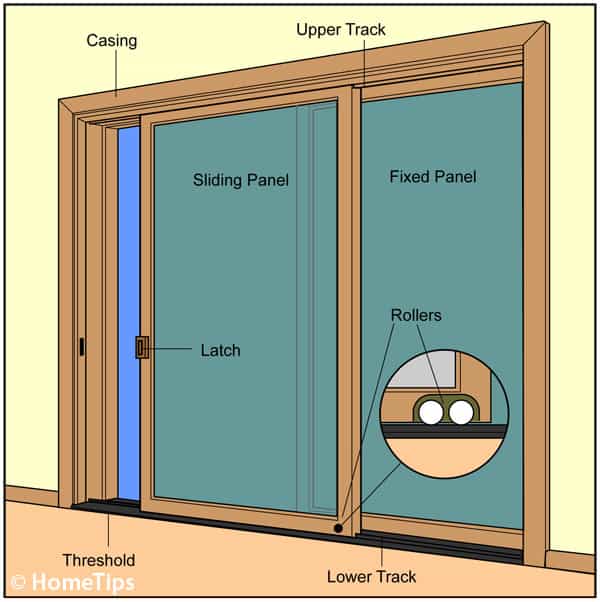An expert guide on how sliding glass doors work, with in-depth diagrams and explanations about the different parts that make a sliding glass door.
Sliding doors move along metal, wood, or vinyl tracks fitted into their frames at the top and bottom.
To ease their movement, sliding doors often have plastic rollers attached to the top and bottom or to the bottom only.
Lightweight doors, such as interior closet doors, are generally hung from the top, while heavier doors, such as exterior patio doors, glide along the bottom rail.
Exterior sliding doors usually have one movable panel and one fixed panel. (Sliding windows are essentially just small versions of sliding doors. Because they are smaller and lighter in weight than sliding doors, many sliding windows don’t have rollers—their frames simply glide along the tracks.)
Rollers can be adjusted so that doors slide more easily, and plastic tracks can be installed, if not already present, so that the doors stay vertical and aligned on their tracks.
Sliding doors are secured with a variety of catches; the type used depends on the manufacturer and whether the doors are made from metal, vinyl, or wood.








 Don Vandervort writes or edits every article at HomeTips. Don has:
Don Vandervort writes or edits every article at HomeTips. Don has:



